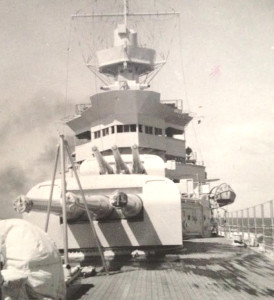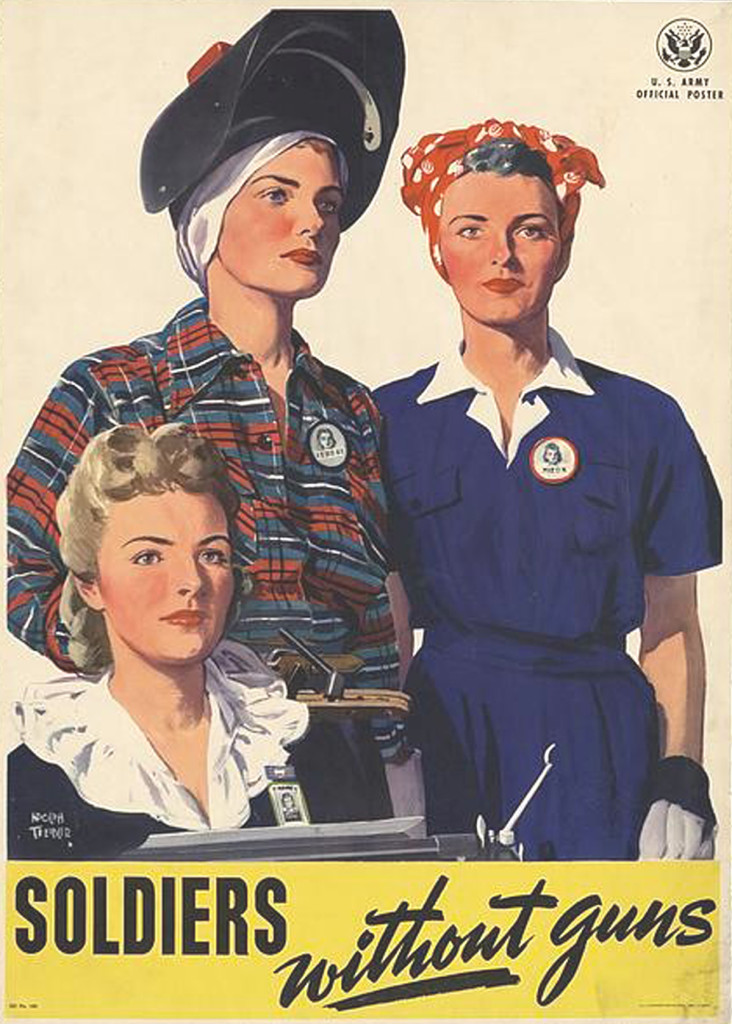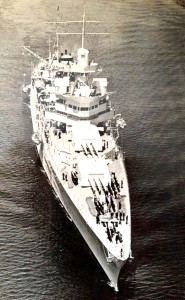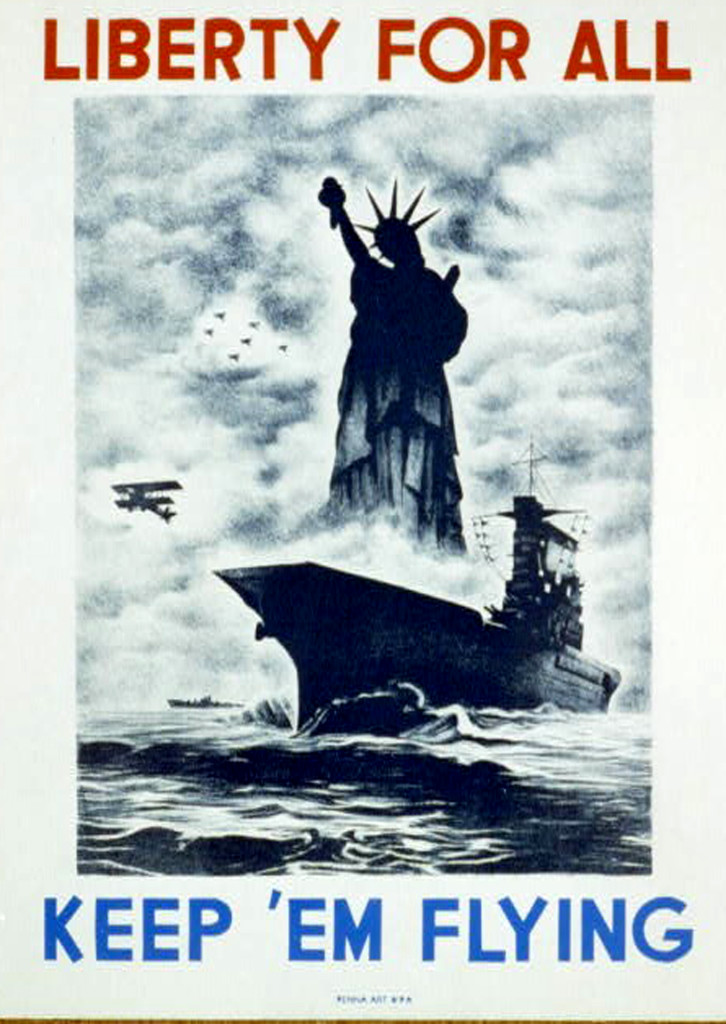On April 18, 1942, four months after the Japanese attack on Pearl Harbor, Lt. Col. Jimmy Doolittle led 80 men — all volunteers — in sixteen B-25s on a mission to strategically bomb Japan. The goal of the mission: to show the Japanese they were not invincible.
On top of the dangers of going in low — even as low as just above rooftop height — into enemy territory, every plane would be lost. For many of the Raiders, including Doolittle, this meant parachuting into the night over who knows what. Three raiders were lost exiting their aircraft, eight were captured by the Japanese and one crew was held by the Russians for 13 months.
On Doolittle’s planes were bombs from Benicia’s Arsenal. But that is not Benicia’s only link to the Doolittle Raid.
Back in 1896, two brothers moved into neighboring homes on a dusty street in Alameda. In the same year, one brother became the father of future general Jimmy Doolittle. The other brother became the father of Ruth Doolittle, the mother of Robert Hitchcock.
Robert Hitchcock, a Benician for over forty years, served in World War II as a staff sergeant in the 8th Air Force under his second cousin, General Doolittle.
 During the war, Bob served as a radio operator in B-17s, flying 32 missions over France and Germany. Bob’s missions were with Bomb Groups 306, 36 and the well-known 303.
During the war, Bob served as a radio operator in B-17s, flying 32 missions over France and Germany. Bob’s missions were with Bomb Groups 306, 36 and the well-known 303.
On May 8, 1945, the first “Victory in Europe Day,” Bob was in Bedford, England, parading down the main street to the music of bagpipes amid tumultuous cheering. In 2013, 68 years later, he received France’s highest honor — the Legion of Honor — for his help in liberating that country. (For more about Bob’s wartime experiences see “Benician awarded Legion of Honor,” Herald, June 13, 2013.)
Bob and several others with links to both Benicia and the war are the subject of the next Benicia Capitol Neighbors Exhibit at the Benicia State Capitol, opening May 3. These former soldiers, sailors and war-time workers include:
Harold Bray — Fearful the war would be over before he could join the action, Harold enlisted at the age of 17 early in 1945. After training, he was assigned to the Indianapolis, a heavy cruiser then being repaired on Mare Island. The Indianapolis had taken a hit with casualties, but had managed to make it home under her own power.
Harold sailed with the Indianapolis to Tinian Island in the mid-Pacific ,where she delivered components of the atomic and hydrogen bombs that would be dropped on Hiroshima and Nagasaki that August. And he was aboard when, shortly after the delivery, the Indianapolis was sunk by a Japanese submarine. Harold spent the next 140 hours in the water before being one of only 317 — out of 1,197 — men to survive the sinking.For an enthralling and moving account of Harold’s experience, have him tell you in his own words in this video.
Benicia Herald reporting on Harold includes: “Lost, not forgotten: Veteran recalls cruiser’s sinking in the Pacific,” July 30, 2010; and “Local Indianapolis survivor to dedicate autographed photo,” December 2, 2014.
Mary Ann Gowan — The mother of long-time Benicia English teacher Teresa Finn helped build Liberty ships at the Kaiser shipyards, now Rosie the Riveter/Homefront National Park. It was Mary Ann’s job to make sure prefabricated ship parts delivered to Yard One reached the appropriate ship being assembled.For Mary Ann, the essence of her wartime experience is articulated by an anonymous quote now etched into metal at the Rosie National Park: “You must tell your children, putting modesty aside, that without us, without women, there would have been no spring in 1945.”
Lt. Col. William Jones Hanlon was educated in Benicia, growing up in the Fischer-Hanlon House, which is now part of Benicia Capitol State Historic Park. Two of his sisters, Catherine and Raphaelita, were the last private owners of the house, donating it the the state of California.
Hanlon spent 30 years in the Army Air Corps, flying planes in World War I. In the summer of 1941, he was one of the first interim commanding officers at what is now the Keesler Air Force Base in Biloxi, Miss.
Mary Anna Johnson (later Savoie) graduated from Benicia High School in 1936 and attended the University of California-Berkeley, where she majored in chemistry. After graduation, she was one of four women hired by the National Advisory Committee for Aeronautics (“NACA,” the predecessor of NASA) to work at Moffett Federal Airfield in Mountain View.
Mary Anna’s first job title with NACA was as a “computer,” computing data from wind-tunnel tests on new aircraft designs. The “Wartime Rosies” episode of “America: Fact vs. Fiction” recently reported that women who worked as “computers” were doing work later done by computers.Sometime in early 1941 Mary Anna applied for a posted job to become the aeronautics librarian at Moffett, and she got it. In October 1941 she left for three months of training for her new job in Washington, D.C.
In mid-January of 1942, the three months over, she boarded a TWA DC-3 plane for California. When the plane stopped in Indiana, movie star Carole Lombard, Carole’s mother and Carole’s publicist boarded the plane. Carole had just finished one of the most successful war bond selling tours of the World War II era. She was in a hurry to get back to California because she had heard rumors that her husband, Clark Gable, was fooling around with Lana Turner, the co-star of his new movie.
Mary Anna was excited to have Lombard on the plane because, she said later, when the plane eventually landed in Burbank she might get to see Clark Gable picking up Carole.
When the plane landed in Albuquerque, N.M., however, all civilian passengers were told that they would be bumped to allow a group of Army Air Corps flyers, considered “critical to the war effort,” to take their places. These young men had the job of flying new planes produced in West Coast factories to the European War zone, and they were now on their way back to California to pick up their next planes.
Lombard, desperate to get to California, told the TWA agent she was also “critical to the war effort” as she had just sold $2 million in war bonds in one day, adding that she was also traveling on official government business. The TWA agent, perhaps intimidated by having a movie star yelling at him, allowed Carole and her party to remain with the plane. Mary Anna knew she could also use the “critical to the war effort” and travelling “on official government business” excuse to stay with the plane, but such pushiness was not in her nature.
A few hours later, the plane carrying Lombard, her party and the Army Air Corps flyers crashed into a hill outside of Las Vegas. All aboard died.
* * *
FOR A SALUTE TO ALL VETERANS, a celebration of Victory in Europe and more about Benicians and their role in winning World War II, come to the Benicia State Capitol on May 3, beginning at 1 p.m.
For more information on Robert Hitchcock see “I Could Never be So Lucky Again,” an autobiography by General James H. “Jimmy” Doolittle with Carroll v. Glines (1991).
For more on Mary Anna Johnson see “Fireball: Carole Lombard and the Mystery of Flight 3,” by Robert Matzen (2014); as well as “Member of Benicia High Class of 1936 searches for classmates” (Herald, July 11, 2011) and “Crash that killed popular actress revisited; includes tale of Benician’s brush with death” (Herald, March 23, 2014).
Donnell Rubay is a Benicia resident and the author of the Benicia-based novel, “Emma and the Oyster Pirate.” She has a degree in economics from the University of California-Berkeley.










Great article!
Harold Bray’s story is a remarkable one, which should be known by all who are interested in WWII history. The story of the Indianapolis is also featured in the Spielberg movie ‘Jaws’ :
http://www.bing.com/videos/search?q=jaws+indianapolis+speech&FORM=VIRE1#view=detail&mid=F8DE1DA2DCC4E34B39F7F8DE1DA2DCC4E34B39F7
I post this, because unfortunately the link to the Harold Bray interview results in a “video not available” message.
Thank you Mr. Bray, as well as all those named and some not named, such as The Herald’s often featured columnist : Jerome Page.